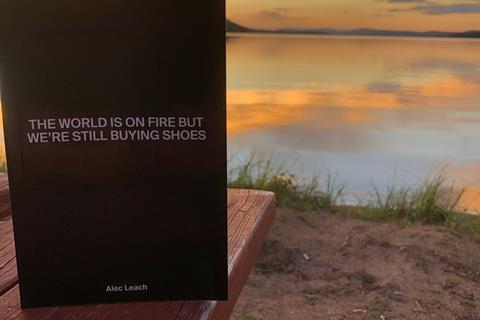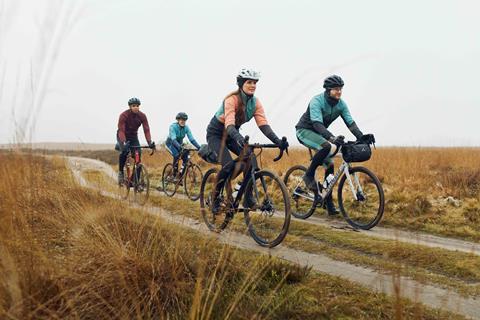Despite technological advances, the textile industry looks set to miss crucial environmental targets for sustainability. Is it enough to change how the industry works, or must the industry itself change?
COP26 in November 2021 brought the climate crisis to the forefront of European consciousness, but there has been markedly less interest in COP27 (the follow-up meeting in Egypt) or COP15 (on the threat to biodiversity, held Aug. 2022). Better known is the 2015 Paris Agreement, which pledged to work towards keeping global temperatures from rising more than 1.5 degrees. The legally binding treaty was a framework, with the implementation details to be worked out by individual signatories. But the latest report from Textile Exchange states that, even if all the best practices are implemented, the target in the textile industry will still be missed.
The concept of regenerative agriculture
Although modes of implementation in the industry are evolving, it appears that the most constructive actions for achieving climate goals lie in regenerative agriculture, for natural fibers like cotton and wool, and some synthetic fabrics. The concept differs slightly based on individual locations, but centers on sustainable and replenishable natural processes, healthy soils sequestering carbon from the atmosphere, and biodiversity. “Regenerative agriculture is about growing raw materials in alignment with natural systems and Indigenous practices,” said Beth Jensen, Climate+ strategy director at Textile Exchange.
The technology is promising, but if ReGenAg were introduced on a large scale, livestock production would have to be reduced by 75 percent to create optimal farming conditions. This raises the moral question of whether it makes sense to grow more textiles while 1 billion people in the world live below the nutritional poverty line.
However positive the research into new sustainable technologies, is this a classic case of details distracting attention from the more holistic question: Why do we continue to buy more products? If we used, for example, our current apparel products longer (by taking better care of them or renting them only when needed), there would be no demand for constantly changing products. Unfortunately, the first reaction from companies is to question why they should reduce their revenue by selling fewer products; as opposed to interpreting this as an opportunity to create a service economy that deals with outdoor products.
Overconsumption vs. rental and maintenance
Currently, the automotive industry makes greater profits leasing and servicing cars than selling them. If the car industry can change its business model, why can’t the outdoor industry? There are already quite a few rental services in the sporting goods sector, especially in the personal safety equipment (PSE) sector. Here, additional business income is being generated from regular maintenance and testing.
A rental principle will encourage the production of better products, which simply need to last longer as they will be used more frequently and by a range of people. Arc’teryx demonstrated that longer-lasting products are feasible without sacrifice when they changed the face fabric of their AR jacket from a 40-denier polyamide to a 60-denier fabric (using thicker yarns); the physical durability increased by 50 percent, while the tear strength of the fabric increased by 100 percent. The additional weight of the garment was only 3.5 grams – hardly noticeable.
GenZ embraces sharing
A product that could be more easily revitalized or repaired would serve the rental process better. It would also be welcomed by the incoming Generation Z, who are characterized by embracing car club rental models when they live in cities, and eschew ownership. Gen Z are already in debt, so are attracted by deals; but, they also have less problems buying an expensive product compared to the older Gen X or Y, so long as the brands have similar values to theirs. Scandinavia is leading the way, with Houdini and Haglöfs as great examples of offering a garment rental service. Fjällräven is the industry’s best case of encouraging slow fashion. And Gen Z want to have the scars of experiences seen on their garments – hence the contrast color option of the Rab repair services proving to be so popular.
In the search for solutions, another key learning from the car industry is that, in order to ensure best performance, a vehicle should be serviced on a regular basis. The same is true for technical garments. Those who work with the customer returns of waterproof breathable garments know that the most common solution for soiled products is to just wash it to get rid of the contaminating dirt and debris. Of those that use machine washes, a high percentage have either used regular detergent – which leaves an anhydrous (water-attracting) finish on the garment – or do not use a service wash to clear the detergent residue from their machines before the cleaning process. In other words, there is a lack of knowledge (or service models) of how to keep gear performing.
Some products simply do not work or cannot be designed within these parameters (the extra weight that trail shoes would require, or the thought of wearing pre-owned underwear). The solution here is to use ingredients that can easily go into a fiber-to-fiber recycling system, or learn from Inov-8, who are using a graphene additive to make their product last even longer. The latter meets the overall object of circular economy principles by keeping the original product in use for as long as possible.

Jason Hickel: “Less is More: How degrowth will save the world”
But still, nothing beats slowing the rate of consumption, and there are signs that the industry is coming round. Jason Hickel, author of Less is More: How degrowth will save the world, was the chosen keynote opening speaker at the European Outdoor Summit. The most popular text in design circles is The World is on Fire, but we’re still buying Shoes by Alec Leach. It is time for brands to follow the practice as demonstrated by Icebug with their shoe production philosophy: “You can’t save the planet by buying Icebug shoes…But if you need a pair of shoes, we’re doing what we can to reduce the environmental damage.” No matter how much more brands want to sell, they should concentrate on increasing their sales of servicing packages, as that will win them the respect of the incoming generation.
Impact of the EU Green Deal will change supply chains
The impact of the upcoming EU Green Deal will see supply chains change, as rPET from old beverage bottles is recycled back into new bottles instead of being downcycled into clothing. All those old, unworn clothes in our closets will be the textiles of the future, forming the feedstock for fabrics. The future will also be more synthetic. As the current consequences of the Bangladesh floods for the cotton crop are likely to be repeated, polyester products (which already make up the majority of all textiles) will fill the gap. More than anything else: the future is here already – brands just need to keep up!

About the author:
Charles Ross is a textile specialist based at the Royal College of Art in London; he has taught Performance Sportswear Design to the next generation of Outdoor Industry designers for over two decades. His mantra is “Sustainability through Longevity.”






